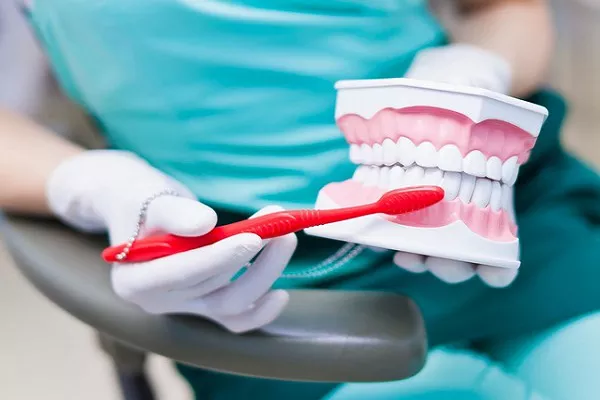A bright, white smile is a coveted aesthetic feature, and teeth whitening has become increasingly popular. Many individuals seek professional teeth whitening treatments to achieve the best results safely and effectively. One crucial element of these treatments is the teeth whitening gel used by dentists. In this comprehensive guide, we will delve into the types of teeth whitening gels dentists use, how they work, and what you can expect from a professional teeth whitening procedure.
Understanding Professional Teeth Whitening
Professional teeth whitening, often performed in a dental office, is a controlled and supervised process to lighten the color of your teeth. Unlike over-the-counter (OTC) whitening products, such as whitening toothpaste or strips, professional treatments offer stronger and longer-lasting results.
Teeth whitening gels used by dentists contain active ingredients that penetrate the tooth enamel to break down and remove stains. These gels are applied directly to your teeth and may be activated by various methods, including light, heat, or chemical reactions.
Types of Teeth Whitening Gels Used by Dentists
Dentists use various types of teeth whitening gels, each with its unique characteristics and advantages. The most common types include:
Hydrogen Peroxide-Based Gel:
Hydrogen peroxide is the most widely used active ingredient in professional teeth whitening gels. It can penetrate the enamel and dentin layers of the tooth to break down stains and discoloration. Hydrogen peroxide-based gels come in different concentrations, typically ranging from 15% to 40%.
Advantages: Hydrogen peroxide is highly effective and provides rapid results. Dentists can tailor the concentration to match the patient’s specific needs.
Activation: Some hydrogen peroxide gels are activated by specialized lights or lasers, which can enhance the whitening process.
Carbamide Peroxide-Based Gel:
Carbamide peroxide is another common active ingredient in professional teeth whitening gels. It breaks down into hydrogen peroxide and urea when applied to the teeth. Carbamide peroxide gels are available in various concentrations, usually ranging from 10% to 44%.
Advantages: Carbamide peroxide gels are effective and provide a sustained release of hydrogen peroxide, making them suitable for extended wear time.
Activation: These gels typically do not require additional activation methods.
Whitening Gel with Desensitizing Agents:
Some professional teeth whitening gels contain desensitizing agents such as potassium nitrate or fluoride. These additives help minimize tooth sensitivity, which can sometimes occur after teeth whitening treatments.
Advantages: Gels with desensitizing agents are suitable for individuals with sensitive teeth, allowing for a more comfortable whitening experience.
Customized Whitening Trays:
Dentists often create custom-fitted trays for patients to use at home. These trays hold the whitening gel in direct contact with the teeth, ensuring even and consistent coverage.
Advantages: Custom trays provide precise application and are ideal for individuals who prefer at-home whitening with professional-grade gels.
How Professional Teeth Whitening Gels Work
Professional teeth whitening gels work by breaking down and removing stains on the tooth surface. The active ingredients, typically hydrogen peroxide or carbamide peroxide, release oxygen molecules that penetrate the enamel. These oxygen molecules react with the discolored molecules inside the tooth, breaking them down and effectively whitening the teeth.
The duration of treatment and the concentration of the whitening gel may vary depending on the specific brand, type of gel, and the dentist’s recommendations. In-office treatments typically take about one to two hours, while at-home treatments using custom trays may involve daily wear for a specified period.
What to Expect During a Professional Teeth Whitening Procedure
Undergoing a professional teeth whitening procedure involves the following steps:
Consultation: Your dentist will assess your oral health and discuss your goals and expectations for teeth whitening.
Preparation: The dentist may clean your teeth to remove any plaque or debris that could interfere with the whitening process.
Application of Gel: The whitening gel is carefully applied to your teeth. In some cases, the dentist may use a specialized light or laser to activate the gel.
Waiting Period: You will wait while the gel works its magic. The duration varies based on the type of gel and the desired results.
Evaluation: The dentist will assess the results and may repeat the process for additional whitening if necessary.
Post-Treatment Care: Your dentist may provide instructions on post-treatment care, including dietary restrictions and oral hygiene practices to maintain your newly whitened smile.
Benefits of Professional Teeth Whitening
Opting for professional teeth whitening offers several advantages over OTC products, including:
Effective Results: Professional-grade gels are more potent and can deliver more noticeable and long-lasting results.
Customized Treatment: Dentists can tailor the treatment to your specific needs and preferences.
Supervision: Professional teeth whitening is performed under the supervision of a trained dentist, ensuring safety and efficacy.
Reduced Sensitivity: Some gels include desensitizing agents to minimize tooth sensitivity.
Even Whitening: Custom trays ensure even coverage and consistent results.
Conclusion
Professional teeth whitening gels used by dentists are effective and safe solutions for achieving a brighter, whiter smile. Whether you opt for in-office treatments or at-home whitening with custom trays, the active ingredients in these gels, such as hydrogen peroxide or carbamide peroxide, work to break down and remove stains, leaving you with a radiant smile. To determine the best whitening option for you, consult with your dentist, who can provide expert guidance and a personalized treatment plan tailored to your unique needs and preferences.
Related Topics:































